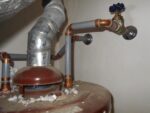Tips to Reduce Home Insurance Costs in South Florida?

- Have a residence with no smokers
- Pay your premium upfront
- Pick paperless billing
- Sign up for automatic payments

Serving South Florida


Filed under: 4 Point Inspection, Blog, Boca Raton real estate, Exclusive Buyer Agency, Exclusive Buyer Agent, First Time Homebuyers, Flood Insurance, Florida Real Estate, Home Buyer Advice, Home Buyers, Home Maintenance, home safety, Homebuyer Advice, Homeowners Insurance, Hurricane Preparedness, Insurance Claims, Real Estate, real estate news, South Florida Real Estate by Kim Bregman
Comments Off on Tips to Reduce Home Insurance Costs in South Florida?

Filed under: 4 Point Inspection, Blog, Exclusive Buyer Agency, First Time Homebuyers, Florida Real Estate, Home Buyer Advice, Home Buyers, home Inspections, Homebuyer Advice, Homeowners Insurance, Insurance Claims, PB Pipes, PEX piping, Polybutylene pipes, Real Estate, Real Estate Investment, real estate news, South Florida Real Estate, What Buyers Should Check When Buying an Older Home by Kim Bregman
Comments Off on Beware of Polybutylene Pines in Older Homes
 Kim N. Bregman
Kim N. BregmanAll information is provided by the licensed REALTOR®/Broker/Agent. This information is not verified for authenticity or accuracy and is not guaranteed. This website is not responsible or liable in any manner for any content posted herein or in connection with our services. Information is not guaranteed and must be confirmed by the end user.
Copyright © 2024 OPTIMA PROPERTIES. All Rights Reserved. Privacy Policy | Intellectual Property Rights | Sitemap | Real Estate Website Design & Internet Marketing by Agent Image